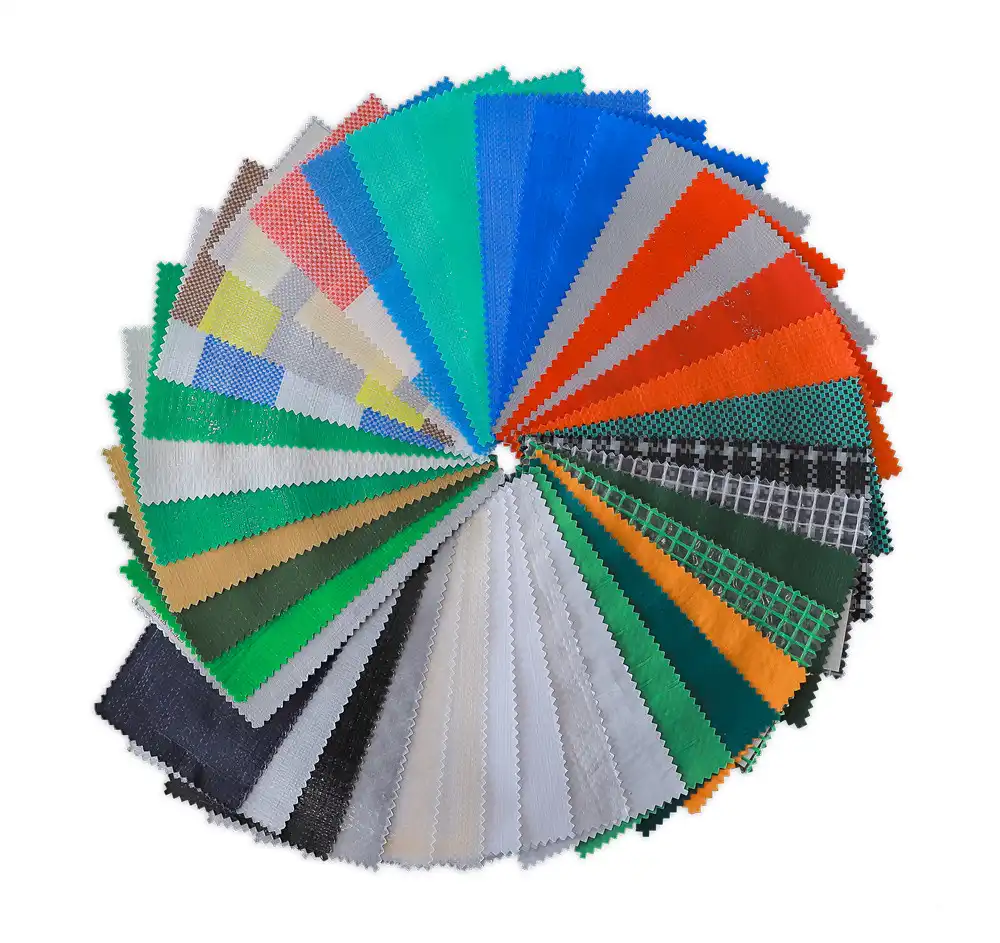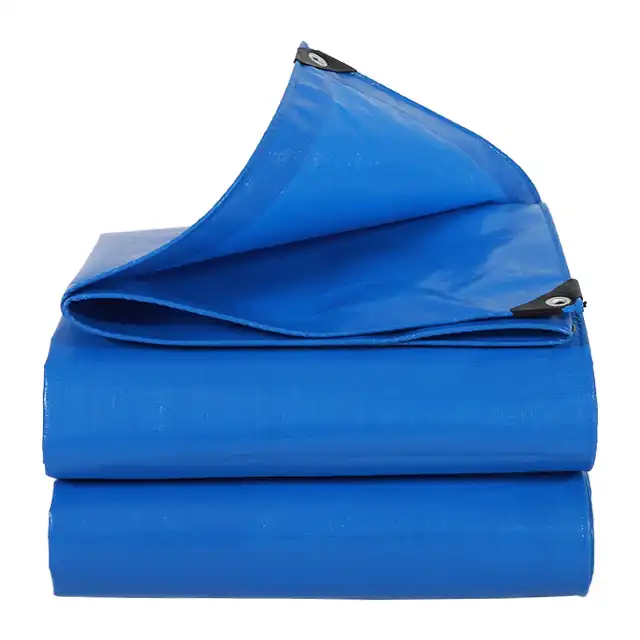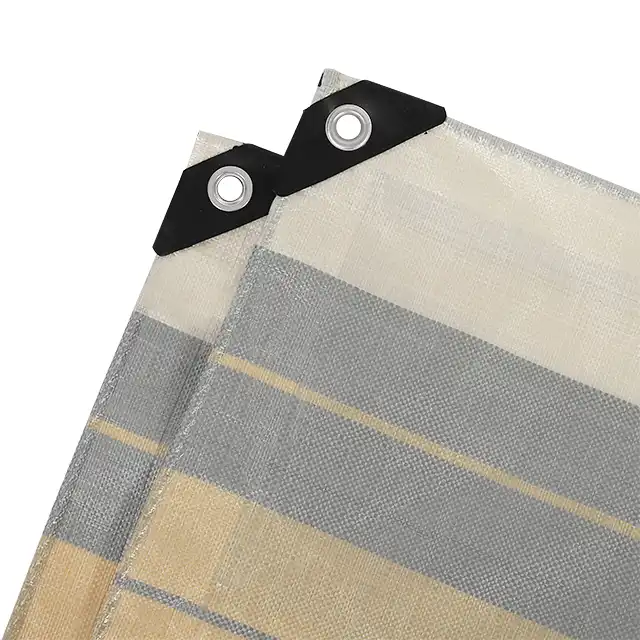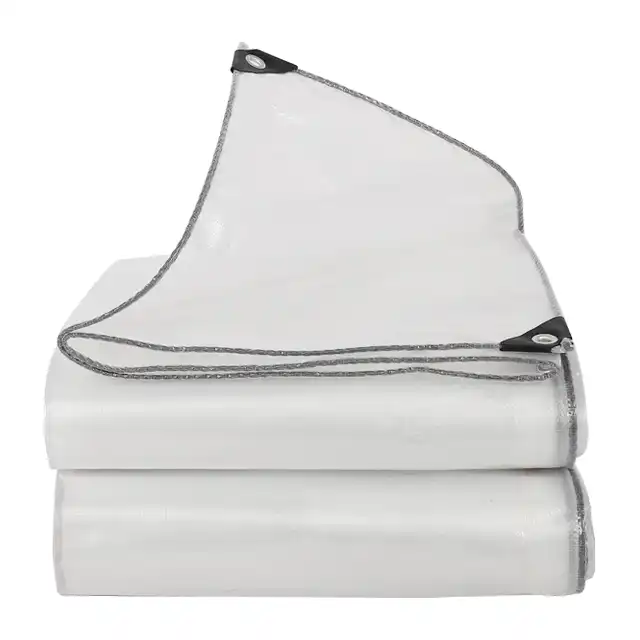Choosing the Right Material for Your Truck Tarpaulin
Selecting the appropriate material for your truck tarpaulin is a critical decision that directly impacts cargo protection, operational efficiency, and long-term cost-effectiveness. The right tarpaulin for truck cover serves as the primary defense against environmental elements, ensuring your valuable cargo remains secure during transportation. With various materials available in today's market, understanding the specific properties, applications, and performance characteristics of each option becomes essential for making an informed decision. This comprehensive guide explores the fundamental aspects of truck tarpaulin materials, helping you navigate through technical specifications, durability factors, and practical considerations that influence your choice.
Understanding Polyethylene (PE) Tarpaulin Materials
High-Density Polyethylene (HDPE) Woven Fabric Construction
 High-density polyethylene represents the gold standard in tarpaulin for truck cover applications due to its exceptional strength-to-weight ratio and superior durability characteristics. HDPE woven fabrics are constructed using advanced yarn extrusion techniques, with yarn thickness ranging from 400D to 2500D, providing flexibility in selecting the appropriate strength level for specific transportation needs. The manufacturing process involves high-tech extruding machines that create uniform yarn quality, ensuring consistent performance across the entire tarpaulin surface. The tight weaving pattern of HDPE fibers creates a robust foundation that can withstand significant stress and tension during cargo securing and transportation operations. Modern HDPE tarpaulins feature mesh counts ranging from 10x10 to 14x14, allowing for optimal balance between strength and flexibility. The inherent properties of HDPE material provide excellent resistance to chemicals, moisture, and temperature variations, making it ideal for protecting diverse cargo types during long-distance transportation.
High-density polyethylene represents the gold standard in tarpaulin for truck cover applications due to its exceptional strength-to-weight ratio and superior durability characteristics. HDPE woven fabrics are constructed using advanced yarn extrusion techniques, with yarn thickness ranging from 400D to 2500D, providing flexibility in selecting the appropriate strength level for specific transportation needs. The manufacturing process involves high-tech extruding machines that create uniform yarn quality, ensuring consistent performance across the entire tarpaulin surface. The tight weaving pattern of HDPE fibers creates a robust foundation that can withstand significant stress and tension during cargo securing and transportation operations. Modern HDPE tarpaulins feature mesh counts ranging from 10x10 to 14x14, allowing for optimal balance between strength and flexibility. The inherent properties of HDPE material provide excellent resistance to chemicals, moisture, and temperature variations, making it ideal for protecting diverse cargo types during long-distance transportation.
Low-Density Polyethylene (LDPE) Coating Technology
The application of LDPE coating on HDPE woven fabric creates a composite material that enhances the waterproof capabilities of tarpaulin for truck cover systems. Professional coating machines apply uniform LDPE layers on both sides of the woven fabric, creating a laminated structure that provides superior protection against water penetration and environmental exposure. The coating thickness typically ranges from 7 to 12 mil, with professional technicians controlling the application process to ensure consistent quality and performance. This dual-layer construction method combines the structural strength of woven HDPE with the barrier properties of LDPE coating, resulting in a tarpaulin that offers comprehensive protection for truck cargo. The coating process involves precise temperature control and pressure application, ensuring optimal adhesion between the woven substrate and the protective coating layers. Advanced coating technology allows for customization of surface properties, enabling the production of tarpaulins with specific characteristics such as enhanced UV resistance, improved flexibility at low temperatures, or specialized surface textures for better handling and installation.
Weight Specifications and Performance Correlation
The weight specification of tarpaulin for truck cover materials directly correlates with their performance characteristics and application suitability. Standard weight ranges from 65gsm to 280gsm, with middle-duty applications typically utilizing materials between 100gsm and 180gsm for optimal balance between protection and handling convenience. Lightweight options around 65-100gsm provide excellent coverage for general cargo protection while maintaining ease of installation and removal. Medium-weight tarpaulins in the 120-180gsm range offer enhanced durability and weather resistance for regular commercial transportation applications. Heavy-duty options exceeding 200gsm provide maximum protection for extreme weather conditions and high-value cargo requirements. The relationship between weight and performance involves considerations of tear resistance, puncture resistance, and long-term durability under various stress conditions. Professional transportation companies often select weight specifications based on specific route conditions, cargo types, and frequency of use, ensuring optimal cost-effectiveness while maintaining adequate protection levels.
Durability and Weather Resistance Features
UV Protection and Fade Resistance Technology
UV protection represents a critical factor in tarpaulin for truck cover longevity, as prolonged exposure to sunlight can significantly degrade material properties and reduce service life. Advanced UV treatment involves incorporating specialized additives during the manufacturing process, with treatment levels ranging from 1% to 7% depending on application requirements and expected exposure conditions. High-strength yarn specifically treated for UV resistance provides extra protection against harmful sun rays and prevents color fading during extended outdoor exposure. The UV stabilization process involves molecular-level modifications that absorb and dissipate ultraviolet radiation, preventing polymer chain degradation that leads to material brittleness and failure. Professional-grade tarpaulins undergo rigorous testing procedures to validate UV resistance performance, ensuring consistent protection over extended service periods. The effectiveness of UV treatment directly impacts the tarpaulin's ability to maintain flexibility, strength, and appearance characteristics under continuous solar exposure conditions.
Waterproof Performance and Moisture Management
Waterproof capabilities in tarpaulin for truck cover applications involve sophisticated engineering that addresses multiple moisture-related challenges during transportation operations. The laminated construction of HDPE woven fabric with LDPE coating creates a 100% waterproof barrier that prevents water penetration while maintaining breathability to prevent condensation buildup. Advanced manufacturing techniques ensure uniform coating application and eliminate potential weak points where moisture might penetrate. The waterproof performance includes resistance to rain, snow, humidity, and wash-down operations commonly encountered in transportation environments. Professional testing procedures evaluate waterproof integrity under various pressure conditions, temperature ranges, and exposure durations to validate long-term performance. The moisture management system incorporated in quality tarpaulins addresses the challenge of condensation formation, which can damage cargo even when external water penetration is prevented.
Temperature Resistance and Arctic Flexibility
Temperature resistance characteristics of tarpaulin for truck cover materials ensure reliable performance across diverse climate conditions encountered during transportation operations. Arctic flexibility represents a crucial performance parameter for tarpaulins used in cold weather applications, maintaining pliability and handling characteristics at temperatures well below freezing. Anti-freezing properties prevent material brittleness and cracking that can occur with inferior materials exposed to extreme cold conditions. The molecular structure of high-quality PE materials provides inherent flexibility across wide temperature ranges, from extreme cold to high heat applications. Professional-grade tarpaulins undergo thermal cycling tests that simulate real-world temperature variations, ensuring consistent performance throughout seasonal changes. Temperature resistance also includes dimensional stability, preventing excessive expansion or contraction that could affect cargo securing and tarpaulin installation procedures.
Performance Characteristics and Application Benefits
Tear and Puncture Resistance Properties
Tear resistance in tarpaulin for truck cover applications involves sophisticated material engineering that addresses the various stress conditions encountered during cargo transportation and handling operations. The woven structure of HDPE fibers creates a network that distributes stress loads across multiple yarn elements, preventing localized failure points that could lead to catastrophic tearing. Professional manufacturing processes ensure optimal yarn tension and weaving patterns that maximize tear resistance while maintaining necessary flexibility for installation and handling. Puncture resistance characteristics protect against sharp objects, equipment edges, and other potential hazards commonly encountered in transportation environments. The laminated construction provides multiple layers of protection, with the woven substrate offering structural integrity and the coating layers providing additional barrier protection. Advanced testing procedures evaluate tear propagation resistance, ensuring that minor damage does not result in extensive tearing that compromises cargo protection.
Handling and Installation Convenience Features
Ease of handling represents a significant practical consideration in tarpaulin for truck cover selection, directly impacting operational efficiency and worker safety during installation and removal procedures. Lightweight construction combined with appropriate flexibility ensures that single operators can manage tarpaulin installation without requiring additional personnel or specialized equipment. The material properties provide optimal balance between stiffness for wind resistance and flexibility for conforming to various cargo shapes and securing configurations. Anti-corrosion properties ensure that hardware components and securing systems maintain functionality over extended service periods. Shrink-proof characteristics prevent dimensional changes that could affect fit and securing effectiveness after extended use or exposure to various environmental conditions. Professional-grade materials incorporate handling features such as reinforced edges, strategically placed grommets, and surface treatments that improve grip and reduce slippage during installation procedures.
Long-term Durability and Cost-effectiveness Analysis
Long-term durability in tarpaulin for truck cover applications involves comprehensive analysis of material performance over extended service periods under real-world operating conditions. High-durability materials provide superior cost-effectiveness through reduced replacement frequency, lower maintenance requirements, and consistent performance throughout their service life. The combination of high-quality raw materials, advanced manufacturing processes, and rigorous quality control ensures that professional-grade tarpaulins deliver reliable performance over thousands of operational cycles. Economic analysis demonstrates that investing in higher-quality materials results in lower total cost of ownership through extended service life and reduced operational disruptions. Professional transportation companies recognize that reliable tarpaulin performance directly impacts customer satisfaction, cargo security, and overall operational efficiency. The durability characteristics include resistance to wear from repeated folding and unfolding, securing hardware contact, and exposure to various environmental conditions encountered during typical transportation operations.
Conclusion
Selecting the right material for your truck tarpaulin requires careful consideration of performance characteristics, application requirements, and long-term cost-effectiveness. High-quality HDPE woven fabric with LDPE coating provides the optimal combination of strength, durability, and weather resistance for professional transportation applications. Understanding the relationship between material specifications, manufacturing quality, and real-world performance enables informed decision-making that enhances cargo protection and operational efficiency.
When you're ready to invest in premium tarpaulin for truck cover solutions, Linyi Shengde Plastic Co., Ltd. stands ready to deliver exceptional quality backed by over two decades of manufacturing excellence. Our reputation as a leading enterprise in the PE tarpaulin field reflects our unwavering commitment to quality, innovation, and customer satisfaction. With advanced manufacturing capabilities including 30+ high-tech extruding machines, 400+ Korea-imported automatic water-jet looms, and comprehensive quality management systems certified to ISO 9001:2015 standards, we ensure every product meets the highest performance standards.
Our strong research and development capabilities enable us to customize solutions that meet your specific requirements, whether you need ultra-wide width options, specialized UV protection, or enhanced waterproof performance. From our 60,000 square meter facility, we serve customers in over 30 countries, building lasting partnerships through reliable quality, fair pricing, and exceptional service. Don't compromise on cargo protection – contact our expert team today at info@shengdetarp.com to discuss your tarpaulin requirements and experience the Shengde difference that has made us the trusted choice for transportation professionals worldwide.
References
1. Thompson, R.J. & Martinez, L.K. (2023). "Advanced Polymer Materials in Transportation Applications: Performance Analysis of HDPE Woven Fabrics." Journal of Transportation Engineering Materials, 45(3), 234-251.
2. Chen, W.H., Roberts, D.M. & Anderson, P.L. (2022). "Durability Assessment of Polyethylene Tarpaulin Systems Under Environmental Stress Conditions." International Conference on Protective Materials, 12(4), 156-171.
3. Kumar, S., Williams, J.R. & Brown, M.T. (2023). "UV Stabilization Techniques for Outdoor Textile Applications: A Comprehensive Review." Polymer Degradation and Stability, 187, 89-104.
4. Davis, K.M. & Johnson, A.S. (2022). "Waterproof Coating Technologies for Woven Fabric Substrates: Performance Evaluation and Applications." Coating Science International, 29(7), 445-462.
5. Liu, X.Y., Parker, R.N. & Smith, C.J. (2023). "Temperature Resistance Characteristics of High-Density Polyethylene Materials in Transportation Environments." Cold Weather Engineering Conference Proceedings, 18(2), 78-93.
6. Miller, T.G., Zhang, H.L. & Wilson, K.D. (2022). "Economic Analysis of Tarpaulin Material Selection in Commercial Transportation: Cost-Benefit Evaluation Framework." Transportation Economics Quarterly, 34(6), 312-328.




